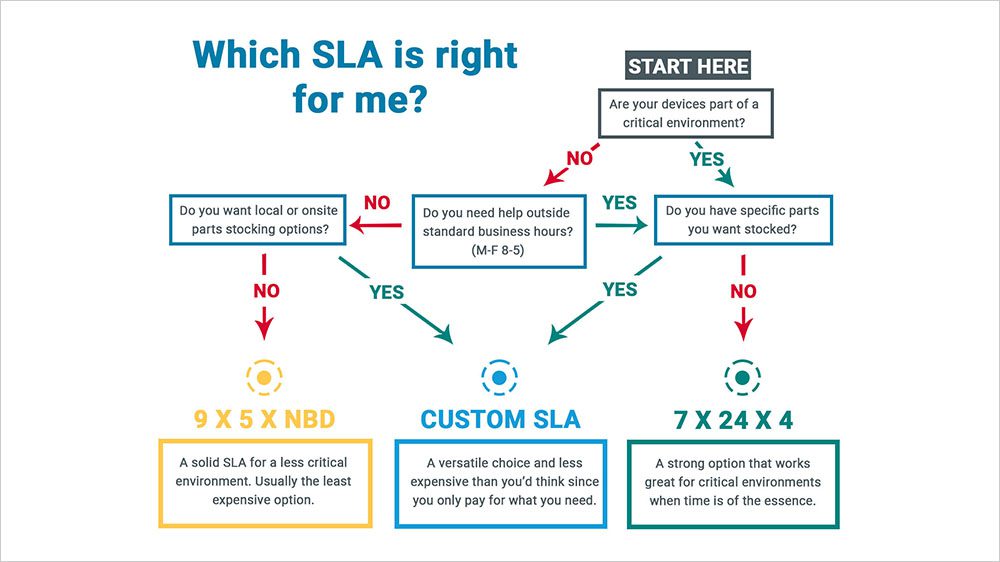What's Included in a Service Level Agreement?
What Is Included In My SLA?
Taking the Guesswork Out of Your Service Level Agreement
Knowing what is included in your service level agreement is an important part of a successful relationship with your third party maintenance provider. Sometimes even when you think you know or understand your SLA, you may have expectations that may not be part of your contract.
One of the things we strive to do at M Global is to provide transparency to our customers so they can fully understand the service they are getting and not be surprised by hidden meanings or vague definitions.
We welcome and encourage questions from prospective clients especially when it comes to defining what they can expect from our service. We do this because we want to be able to keep our clients happy year over year (we have a 99% client retention rate).
7x24x4 SLA
One of the most common issues we see is the lack of clear definition behind the “4” in the 7x24x4 SLA. It’s fairly obvious that the “7” stands for seven days a week and the “24” stands for 24 hours a day. The”4” is where things get a little trickier since this can mean different things to different providers. And unfortunately, a lot of times a lack of understanding can create expectations that will not be fully met when a crisis comes.
Many TPM providers can customize your contract so that elusive “4” can mean whatever you need it to, so when comparing quotes make sure you are comparing apples to apples. Since providers may define the “4” differently, it is important to have a conversation with them to make sure you fully understand their definition and know what to expect. Service level agreements are complicated and it’s unlikely that you will be able to truly compare offerings and prices without talking with the providers.
Every piece of an SLA is connected and its complex nature makes considering all aspects of a contract critical. For instance, the parts stocking strategy plays a vital role in the ability to fulfill the terms of the contract. It won’t matter how quickly a technician can get out to the site, they won’t be able to fix the problem unless the necessary parts have been stocked locally or on-site.
Parts Stocking
In fact, part stocking strategies are an often overlooked area of an SLA. Sometimes providers are less than forthcoming about the parts they intend to stock for you, and trying to find out exactly which parts will be stocked can be met with vague explanations and subtle redirection. This can greatly affect your SLA. If the provider is under no obligation to stock the part in question that you need, it won’t matter how great the SLA may look on paper, it won’t be fulfilled.
That scenario is super frustrating, and that’s why at M Global, we provide clients with a detailed list of parts that we will stock for the client. Clients are able to review the list and if changes are needed, no problem, we got you. Also, inventory is dedicated to each client’s individual contract—not shared between multiple clients as with some providers. We take the time to assess client needs and put together an SLA that will meet their needs.
Understanding a service level agreement before you sign the contract can help you get the most out of your relationship with your TPM provider. It boils down to asking lots of questions and if you aren’t able to get the answers you need, then it’s probably time to move on to a different provider. Give us a call and we can help.

Author Note:
Written by Angie Stephens with contributions from M Global team members including SMEs, management executives, and more.
Suggested Content
SLA Series - SLA 101
SLA Series - What's up with the "4"?
SLA Series - Parts Stocking & Shipping
SLA Series - Response Times & Coverage Window
Get Started Now
We want you to consider us an extension of your team, a trusted resource and advisor. Call us today at 855-304-4600 to find out more.



